My Twenty-One Best Gothic Novels: A Book Collectors perspective
Emeritus Professor Chris Browne, Monash University.
This is a list of my twenty-one most desirable examples of Gothic Literature from a book collector's perspective. In this article, I will briefly discuss elements of the publication history of the first six of the twenty-one works that I have chosen.
I will also nominate which edition I would select as the most desirable to have in my Gothic Library. Although to most book collectors, the first edition of any book is often the most desirable, that is not necessarily the case. The choice is of course entirely personal.
The books are presented here in order of first publication, and I have not attempted to put them in any order which reflects literary merit or desirability as a collectible book. I do have copies of all the books nominated here in my personal collection, although some of the most desirable editions remain on my ‘wants’ list. One or two I expect never to find!
1764 The Castle of Otranto: Horace Walpole
1778 The Old English Baron: Clara Reeve
1786 Vathek: William Beckford
1793 Castle of Wolfenbach: Emily Parsons
1794 The Mysteries of Udolpho: Anne Radcliffe
1796 The Monk: M G Lewis
1817 Northanger Abbey: Jane Austen
1818 Frankenstein: Mary Shelley
1833 The Hunchback of Notre Dame: Victor Hugo
1847 Jane Eyre: Charlotte Bronte
1847 Wuthering Heights: Emily Bronte
1853 Bleak House: Charles Dickens
1872 Carmilla (In a Glass Darkly): Sheridan Le Fanu
1886 The Strange Case of Dr Jekyll and Mr Hyde: Robert Louis Stevenson
1891 The Picture of Dorian Gray: Oscar Wilde
1894 Trilby: George du Maurier
1897 Dracula: Bram Stoker
1902 The Hound of the Baskervilles: Sir Arthur Conan Doyle
1911 The Phantom of the Opera: Gaston Leroux
1938 Rebecca: Daphne du Maurier
1959 Psycho: Robert Bloch
1764 The Castle of Otranto: Horace Walpole
The Castle of Otranto is generally recognised as the first Gothic novel. The first edition was published anonymously in 1764, and purported to be based on a sixteenth century manuscript from Naples. It was quickly followed by a second edition, published by William Bathoe and Thomas Lowndes in London in 1765 which contained a preface by the author, acknowledging his authorship and explaining the genesis of the book. It starts ‘ The favourable manner in which this little piece has been received by the public, calls upon the author to explain the grounds on which he composed it.’ Sadly for Walpole, the critics, once the authorship had been revealed, changed their minds and dismissed the book as romantic fiction.
I particularly like the Jeffrey’s edition of 1796, which is the first edition to contain coloured illustrations. An edition with black and white illustrations was also published in that year by Jeffrey. The Jeffrey edition of 1796 with the coloured illustrations is on display in the Dark Imaginings exhibition.
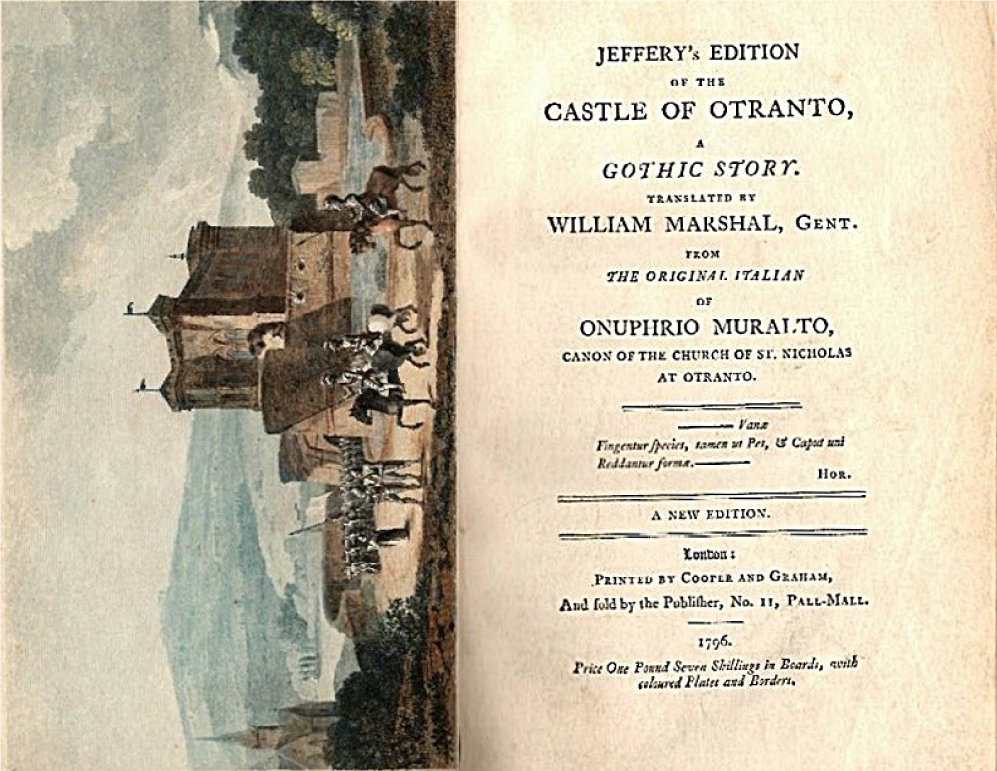
1778 The Old English Baron: Clara Reeve
This story was first published in 1777 under the title The Champion of Virtue. It was republished the next year as The Old English Baron, following revisions by the author’s friend, Mrs Bridgen, who was the daughter of Samuel Richardson. A dedication thanking Mrs Bridgen, dated Sept. 1, 1780, was printed in many subsequent editions. The book was very popular in its day and many editions were published, although Clara Reeve was not generally well regarded.
The ninth edition, printed in London by Law and Gilbert in 1811 for a group of six London booksellers is my highly desirable edition, as it is ‘Embellished with eight elegant engravings’. This edition also contains the original preface and the dedication to Mrs Bridgen.
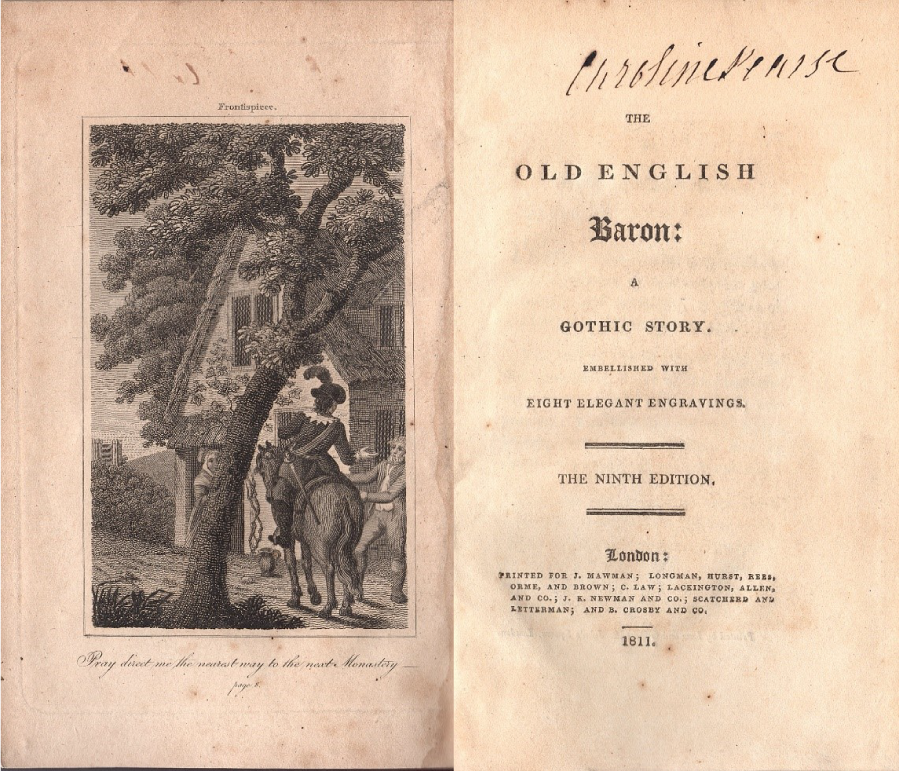
1786 Vathek: William Beckford
Vathek was an early gothic novel with an Arabian setting, which capitalised on a European interest in all things oriental. It was the story of the excesses of a Caliph called Vathek. The book was originally written in French in 1782 by Beckford, who was a wealthy Englishman. The book was first published in England in 1786, in the form of a translation from the French by an English churchman, and the book was not attributed to Beckford for several editions.
The desirable edition of Vathek that I show here is the reprint in Bentley’s Standard Novels of 1834, which has pleasingly romantic oriental illustrations as the frontispiece and on the engraved title page.
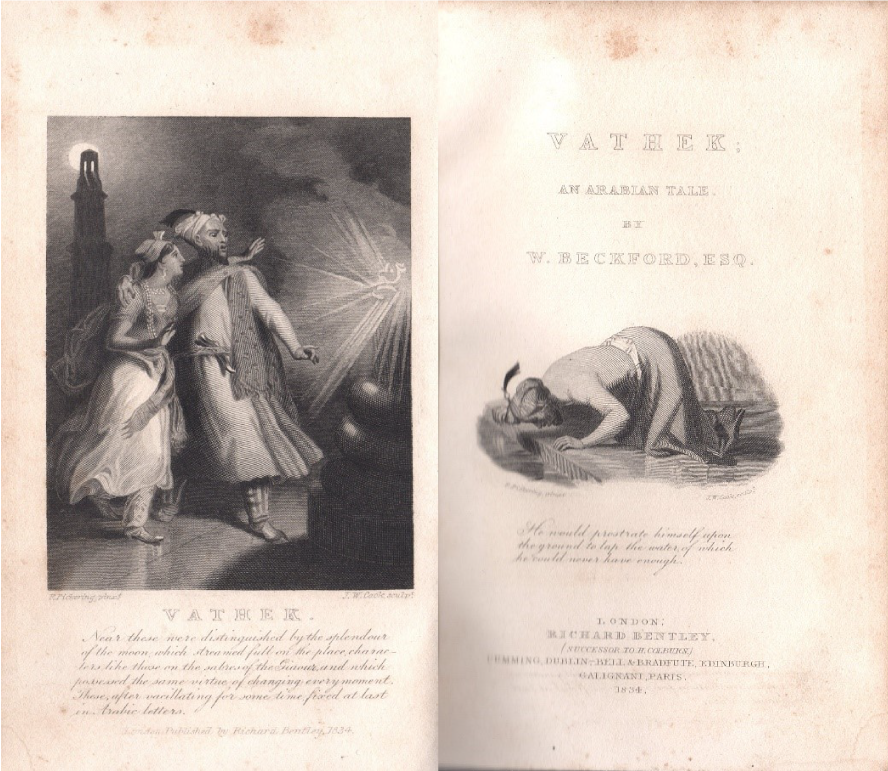
1793 Castle of Wolfenbach: Emily Parsons
Castle of Wolfenbach is one of the ‘Seven Horrid Novels’ famously listed by Isabella Thorpe in Northanger Abbey by Jane Austen. For many years, these novels were thought to be inventions of Jane Austen, but research, published by Michael Sadleir in 1912, revealed that the ‘Seven Horrid Novels’ were all real books. Emily Parsons (1739–1811) had the distinction of being the author of two of the horrid novels; Castle of Wolfenbach and The Mysterious Warning.
Castle of Wolfenbach was first published in 1793 by William Lane in two volumes. It then seems to have been completely out of print until all the seven horrid novels were re-issued by The Folio Press (Society) in 1968. The only possible collectable copy is that Folio Press edition shown here. This edition has an excellent introduction written by Professor Devendra P. Varma, a Canadian expert in Gothic literature.
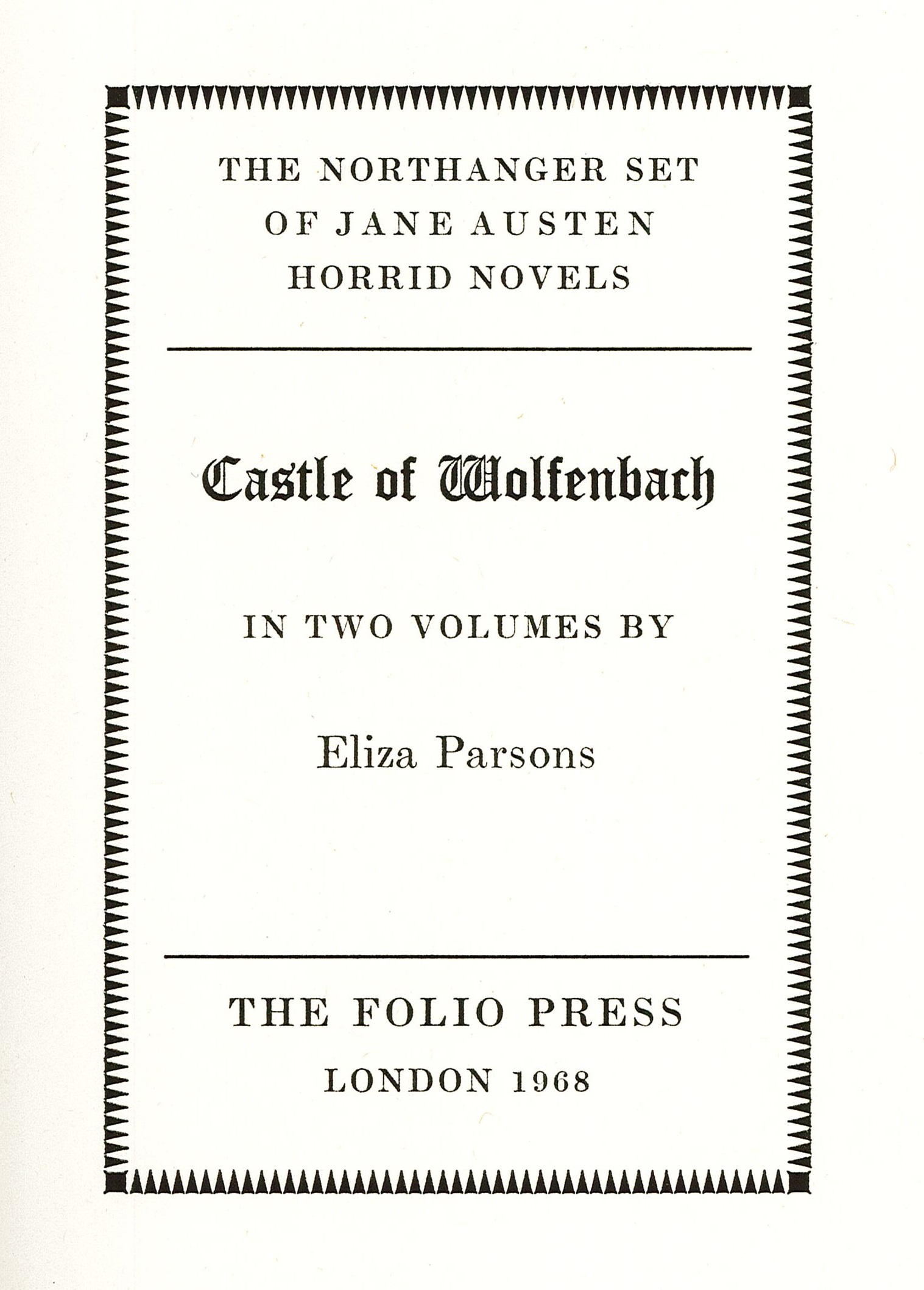
1794 The Mysteries of Udolpho: Anne Radcliffe
The Mysteries of Udolpho is today probably best known because of its appearance in discussions on Gothic novels inJane Austen’s Northanger Abbey. Mrs Anne Radcliffe (1764-1823) was a very successful writer of Gothic novels in the last decade of the 18th century, who made the Gothic novel widely acceptable through her habit of presenting seemingly supernatural events, before providing rational explanations for those events.
First editions of The Mysteries of Udolpho, which was published in 4 volumes in 1794, can still be found by the fastidious collector. I show here the title page of my copy of the first American edition, which was printed by Samuel Etheridge of Boston in three volumes in 1795. Note the mis-spelling of the author’s name.
The Mysteries of Udolpho was very popular in its day and was republished many times. In the exhibition, my third English edition of The Mysteries of Udolpho in four volumes of 1795 is on display in Dark Imaginings.
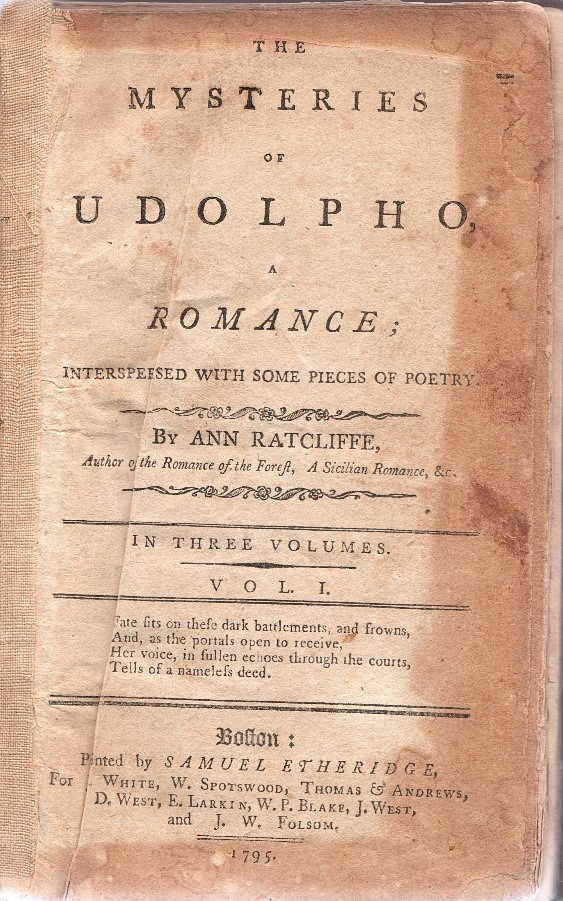
1796 The Monk: M G Lewis
The Monk by Matthew Gregory Lewis, for ever after known as ‘Monk’ Lewis, was a notorious book from the time of its first publication. The story revolves around the relationship between the monk of the title, Ambrosio, and the woman, Matilda who both loves him and tricks him into a sexual relationship with her, in what was described at the time as ‘a lewd and blasphemous book.’ The first edition, dated 1796, was published in three volumes, when Lewis was only 19 years old. In that edition, the author is only identified by the initials M.G.L. In late 1796, after initially favourable reviews, second and third editions were published which identified the author as M.G. Lewis Esq. M.P., for Lewis had been elected to parliament in 1796. In 1797, Samuel Taylor Coleridge published a highly critical review, which condemned the book as one likely to corrupt the reader. In response to this, Lewis edited the book, removing the equivalent of 17 pages of his most extreme writing for the fourth edition published in 1798. Most 19th century editions were further expurgated by other hands.
Any one of the first three editions of 1796 are desirable to the collector. The title page of the first volume of my second edition of October 1796 is shown below. This edition is on display in the Dark Imaginings exhibition.
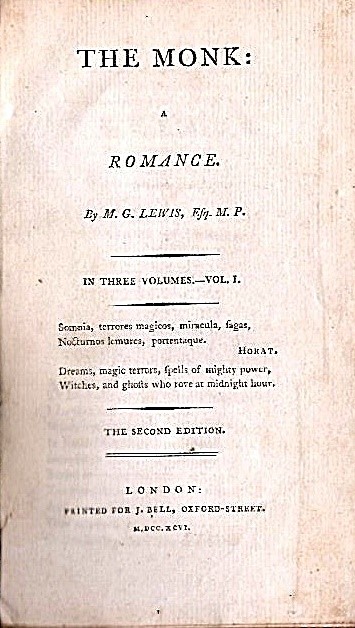
Further reading
To see full discussions on all 21 books, please visit my book blog - http://penguinsandothers.blogspot.com.au.